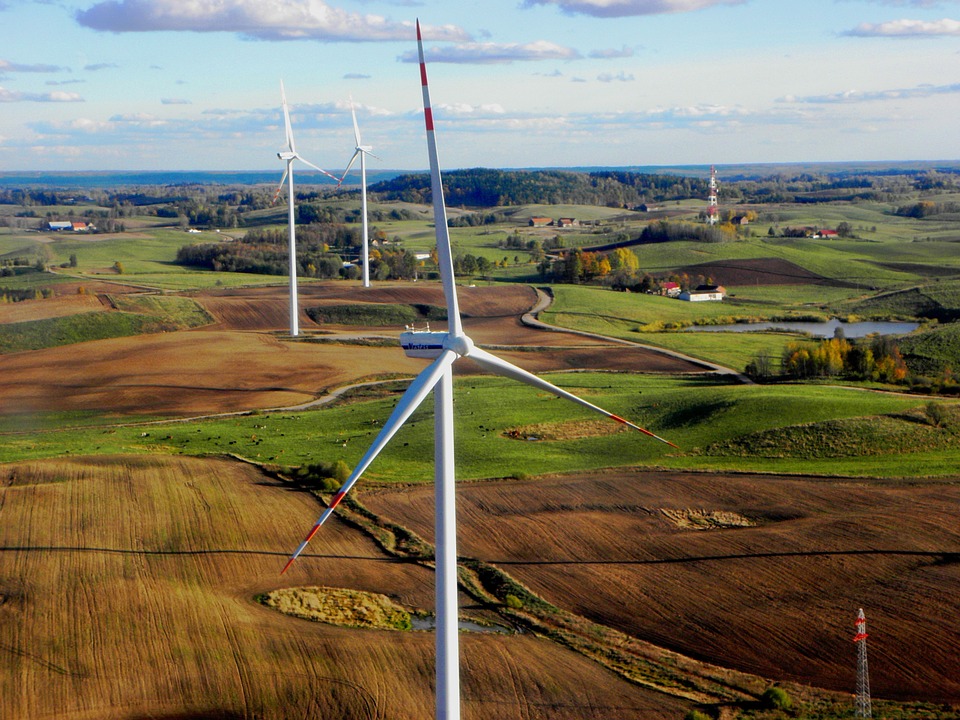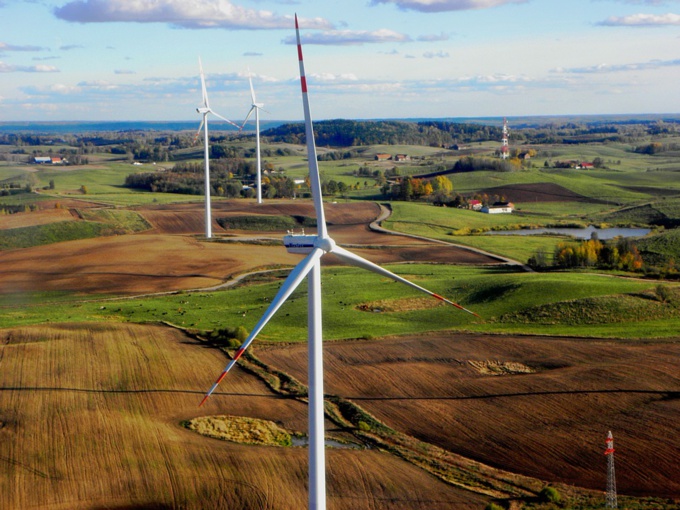According to the American publication’s forecast, the temperature in New York will be higher than in today's Bahrain, an unprecedented drought will cover the main agricultural regions, permafrost will cover Siberia, terrible diseases such as bubonic plague will break out and the global economy will plunge into a permanent crisis.
Against the backdrop of such apocalyptic predictions, can the world find rest in the allegations that the global economy can move relatively quickly and painlessly to 100%renewable energy?
The answer to this question is likely to be negative. Despite the cost reduction, wind and solar stations produce only 5% of the world's electricity. Hydropower is a larger renewable energy source, but its value is growing and investment is declining.
If we consider the demand for energy much wider, that is, including heating of residential premises, transport and industry, then we can say that the share of wind and solar power stations will not exceed 1.6%. Thus, fossil fuels will not be excluded from the energy mix in the near future.
Nevertheless, any energy transition, such as from coal to hydrocarbons in the 20th century, takes several decades. The pace of change is determined by a place where investments are directed. And this gives the green energy some hope.
During the past ten years, the share of solar (PV) and wind power in the generation of electricity has increased. Despite the fact that investments slightly decreased in 2017, the International Energy Agency announced on July 11 that for the first time the volume of introduced capacities using renewable sources in 2016 was almost equal to those used for the production of energy by hydrocarbons.
These two technologies - primarily photovoltaic panels in solar regions - are now cheaper than coal and gas in some countries. Denmark and Scotland have already got used to periods when the equivalent of all of their energy is generated by the wind, said the British magazine The Economist.
Some regions have even more ambitious plans. The Senate of California (the state that is approaching its goal of producing one-third of its energy from renewable sources by 2020) has proposed raising this bar to 60% by 2030, and Germany targets to generate 80% of electricity from "green" sources by 2050.
In 2015, Mark Jacobson of Stanford University said that in 2050-55, electricity, transportation, heating/cooling and industry in America can be fully provided with energy generated by wind, water or the sun, regardless of the weather conditions.
However, in June 2017, Christopher Clack, the founder of Vibrant Clean Energy, criticized the prognosis of Jacobson. According to Clack, focusing only on the wind, water and the sun will greatly complicate and increase the cost of dealing with climate change, as existing technologies with zero use of hydrocarbons, such as nuclear energy and bioenergy, are ignored.
Some scientists have expressed concern about the economic consequences of too rapid penetration of renewable energy sources. Michael Kelly of Cambridge University in his recent article focused on energy efficiency from the energy inputs (EROI) of photovoltaic panels and wind farms, that is, the ratio of the amount of energy that they produce to the investments needed to generate this amount of energy.
Kelly claims that their EROI is significantly lower than that of hydrocarbons; the use of "green" sources to generate half the electricity in the world will lead to less free energy for other types of economic activity.
A large share of renewable sources may be less effective for economic growth than fossil fuel in its best years in the 20th century, but if we want to stop climate change, primarily global warming, then the clean energy system has no alternative.
source: economist.com
Against the backdrop of such apocalyptic predictions, can the world find rest in the allegations that the global economy can move relatively quickly and painlessly to 100%renewable energy?
The answer to this question is likely to be negative. Despite the cost reduction, wind and solar stations produce only 5% of the world's electricity. Hydropower is a larger renewable energy source, but its value is growing and investment is declining.
If we consider the demand for energy much wider, that is, including heating of residential premises, transport and industry, then we can say that the share of wind and solar power stations will not exceed 1.6%. Thus, fossil fuels will not be excluded from the energy mix in the near future.
Nevertheless, any energy transition, such as from coal to hydrocarbons in the 20th century, takes several decades. The pace of change is determined by a place where investments are directed. And this gives the green energy some hope.
During the past ten years, the share of solar (PV) and wind power in the generation of electricity has increased. Despite the fact that investments slightly decreased in 2017, the International Energy Agency announced on July 11 that for the first time the volume of introduced capacities using renewable sources in 2016 was almost equal to those used for the production of energy by hydrocarbons.
These two technologies - primarily photovoltaic panels in solar regions - are now cheaper than coal and gas in some countries. Denmark and Scotland have already got used to periods when the equivalent of all of their energy is generated by the wind, said the British magazine The Economist.
Some regions have even more ambitious plans. The Senate of California (the state that is approaching its goal of producing one-third of its energy from renewable sources by 2020) has proposed raising this bar to 60% by 2030, and Germany targets to generate 80% of electricity from "green" sources by 2050.
In 2015, Mark Jacobson of Stanford University said that in 2050-55, electricity, transportation, heating/cooling and industry in America can be fully provided with energy generated by wind, water or the sun, regardless of the weather conditions.
However, in June 2017, Christopher Clack, the founder of Vibrant Clean Energy, criticized the prognosis of Jacobson. According to Clack, focusing only on the wind, water and the sun will greatly complicate and increase the cost of dealing with climate change, as existing technologies with zero use of hydrocarbons, such as nuclear energy and bioenergy, are ignored.
Some scientists have expressed concern about the economic consequences of too rapid penetration of renewable energy sources. Michael Kelly of Cambridge University in his recent article focused on energy efficiency from the energy inputs (EROI) of photovoltaic panels and wind farms, that is, the ratio of the amount of energy that they produce to the investments needed to generate this amount of energy.
Kelly claims that their EROI is significantly lower than that of hydrocarbons; the use of "green" sources to generate half the electricity in the world will lead to less free energy for other types of economic activity.
A large share of renewable sources may be less effective for economic growth than fossil fuel in its best years in the 20th century, but if we want to stop climate change, primarily global warming, then the clean energy system has no alternative.
source: economist.com



















